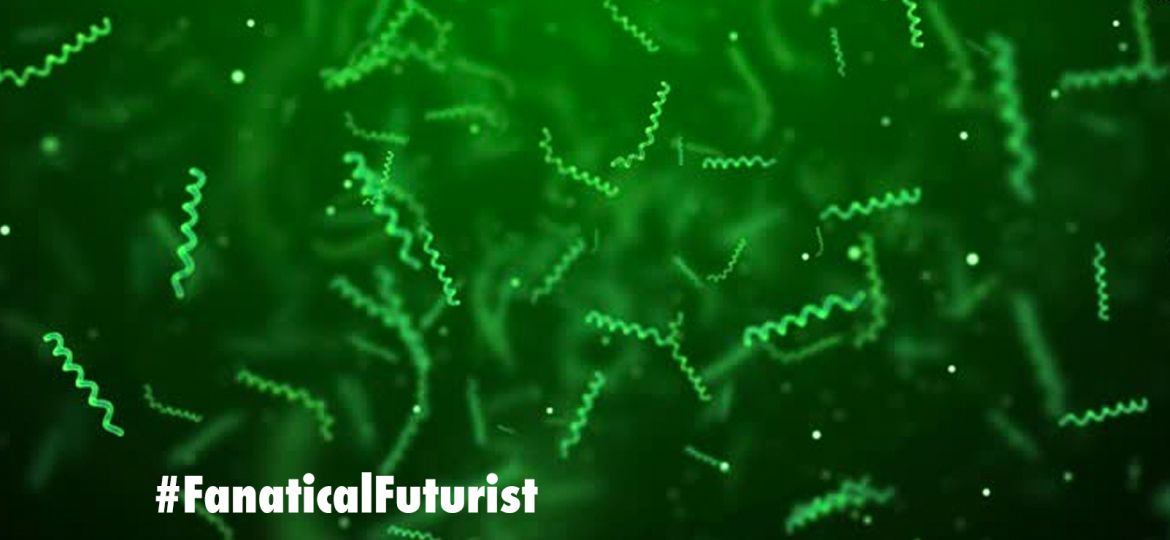
WHY THIS MATTERS IN BRIEF
Being able to identify the earliest stages of disease and treat it with ultimate precision will help doctors treat patients better and help patients recover faster.
Over the past year scientists have developed 3D printed enzyme powered nanobots that can surf through the body’s bloodstream looking for and treating disease, and brain controlled nanobots that release drugs inside cockroaches. Now though scientists in the UK have developed tiny, remote controlled, micro “biohybrid” robots with the ability to release cancer targeting drugs, which they hope will one day be used to diagnose disease and administer drugs inside the human body.
The biohybrid robots are so called because they’re made up of biological cells that have useful “engineered features” added on, in this case namely magnetic particles that allow them to be guided around the body. Despite their highly technical capability the robots the team built are made from Spirulina algae, a product that’s more recognisable as a health food product than a building material.
The gallery was not found!
“Rather than fabricate functional micro biohybrid robots from scratch using intricate laboratory techniques and processes, we set out to directly engineer smart materials in nature,” said Professor Li Zhang, an engineer at the Chinese University of Hong Kong who contributed to the Science Robotics study, and as a result they were able to make use of the algae’s intrinsic properties.
“For instance, because these biohybrid bots have a naturally fluorescent biological interior and magnetic iron-oxide exterior, we can track and actuate a swarm of those agents inside the body quite easily using fluorescence imaging and magnetic resonance imaging,” said Professor Zhang.
This meant the scientists were able to control the robots remotely using magnetism as they moved them to sites in the stomachs of rats where they were used to release the cancer fighting compounds prescicely to the right area, meaning they could have the potential to treat disease.
“Creating robotic systems which can be propelled and guided within the body has been and still is a holy grail in the field of delivery system engineering,” said Nanomedicine researcher Professor Kostas Kostarelos, another team member from the University of Manchester.
The robots are also able to sense changes in the body associated with the onset of illness, an ability that could make them useful tools for diagnosis.
















